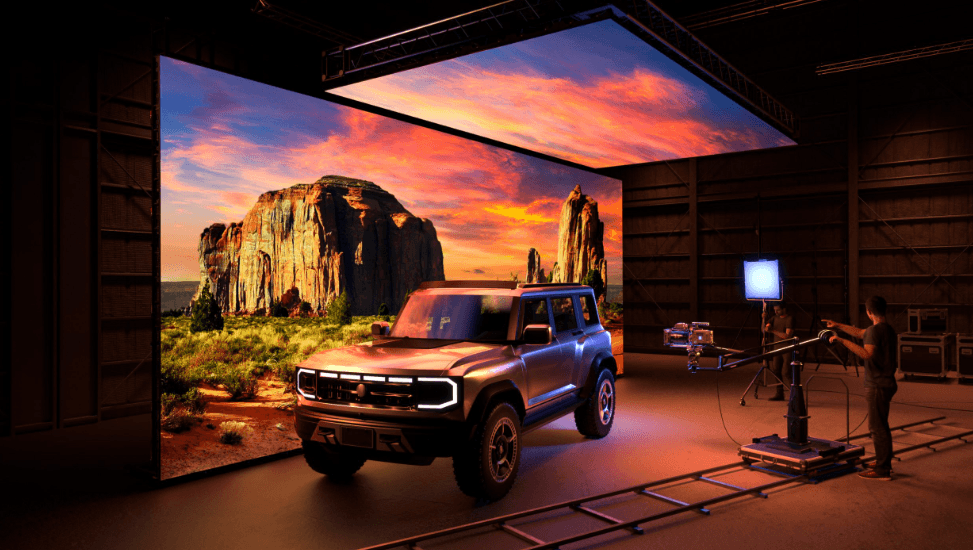
The first ever Sony Crystal LED VERONA video wall has been installed in Germany, at the University of Television and Film Munich’s (HFF) CreatiF Centre, to help educate students about the latest standards in virtual production.
It’s certainly not the most monstrous video wall by any standards, measuring a modest 4 x 2.5 metres, but it represents the pinnacle of modular display technology. Sony said it was built using a total of 40 modules, each one equipped with four LED panels. It will serve as a technology platform for the CreatiF Centre to research new film production and postproduction processes, as well as different ways in which content will be used.
Sony said it was installed by its partner, the systems integrator Pro Video GmbH, with the assistance of the planning company macom GmbH.
The Sony Crystal LED VERONA display is correctly termed a “virtual production wall” that makes it possible for digital backdrops to be projected on a huge screen surface in real-time. It was installed on a rolling structure that enables it to be moved to any location within the CreatiF Centre’s studio. It supports the interaction of physical and digital elements, enabling film scenes to be visualised directly on the production set, enhancing creative processes, Sony said.
The Crystal LED technology is said to be one of Sony’s most advanced displays, featuring a 1.5mm pixel pitch controlled by a Brompton Tessera SX40 processor that ensures “exceptional image quality” with deep blacks and optimal colour rendering. It’s equipped with Sony’s new Deep Black and Anti-Reflection surface tech and it’s exceptionally bright too, rated at 1,500 cd/m2.
In addition, the VERONA Crystal LED wall makes use of high-performance LED driver integrated circuits, supporting a blazing-fast refresh rate of up to 7,680Hz. That is, of course, far, far faster than any consumer LED display, or OLED display for that matter, where the very best monitors currently max out at just 540Hz. It’s also significantly higher than any other commercially available display, and ensures no noticeable flickering or image artefacts, which can be especially disruptive in virtual production environments.

The installation is said to be a key milestone for HFF University, underscoring its role as a leading centre for training the next generation of filmmakers. Simon von der Au, project manager of the CreatiF Centre, said it will enable students to explore the limits of video production technology in an extremely flexible way, and can support the development of more innovative approaches to filmmaking.
"This expands creativity and technical feasibility in film production,” Von der Au said. “With this system, HFF Munich can train its students in state-of-the-art technology and prepare them for the future of work. At the same time, we are opening up completely new opportunities for filmmakers to realise their visions."
Sony Europe’s key account manager of Media Solutions, Georg Armborst, said he was pleased to see HFF in Munich install Germany’s first-ever Crystal LED VERONA screen.
“This underlines HFF's pioneering role and commitment to operating at a top international level and helping to shape future trends in the film industry,” he added. “In addition, thanks to its modular design, our Crystal LED VERONA system offers flexible application options for the HFF and its students."
The CreatiF Centre said it’s now going to begin testing the display, ahead of its official launch next spring, when students will be able to start using it.